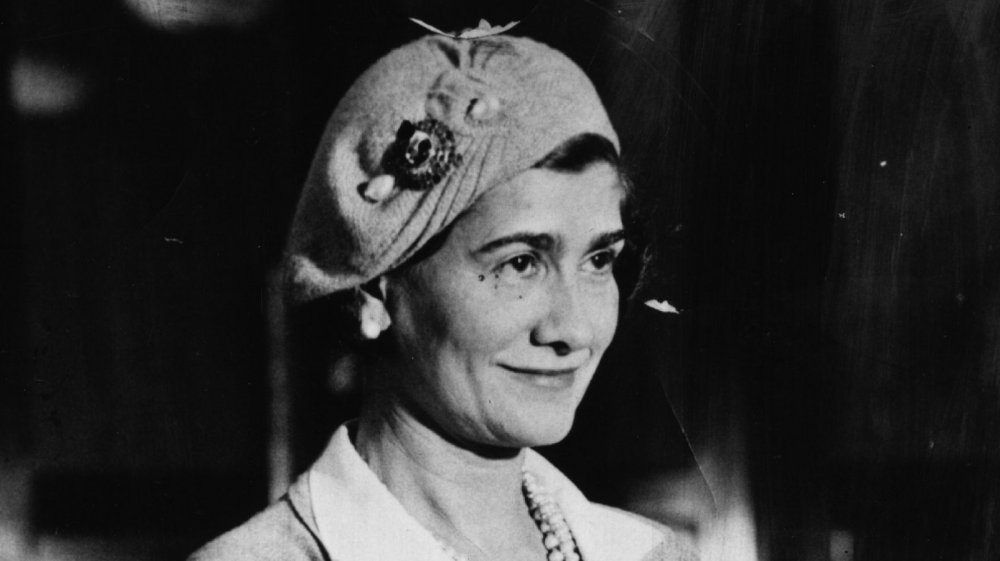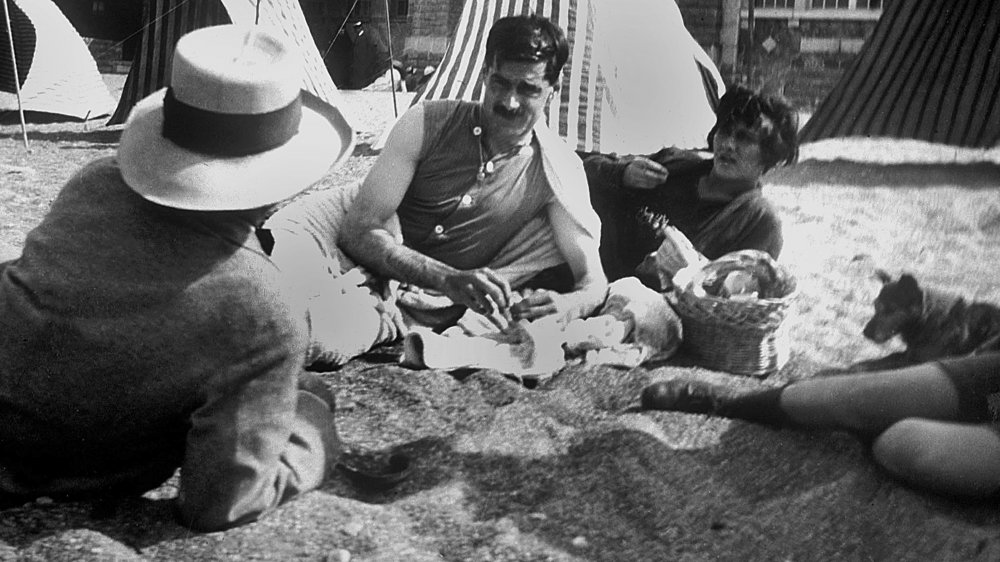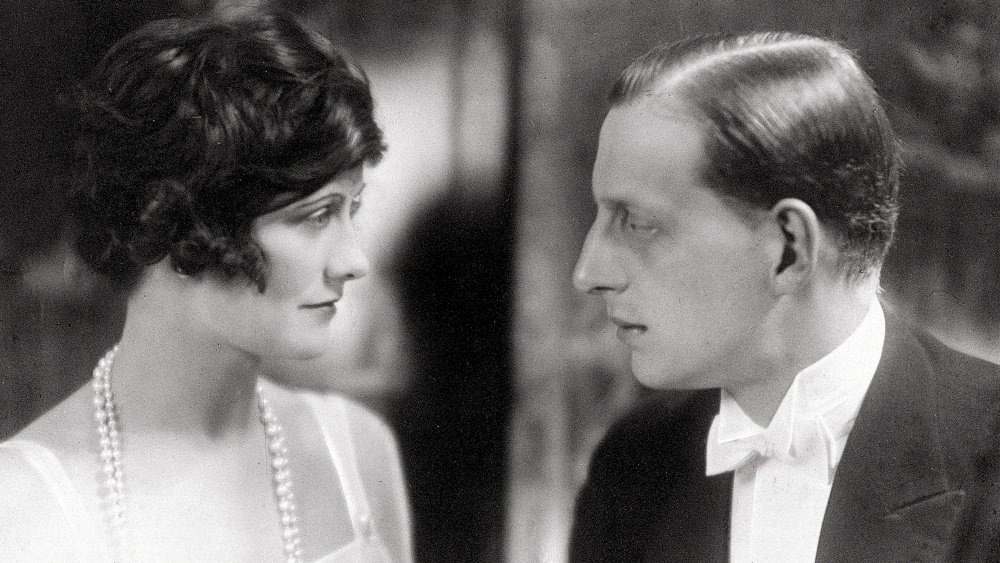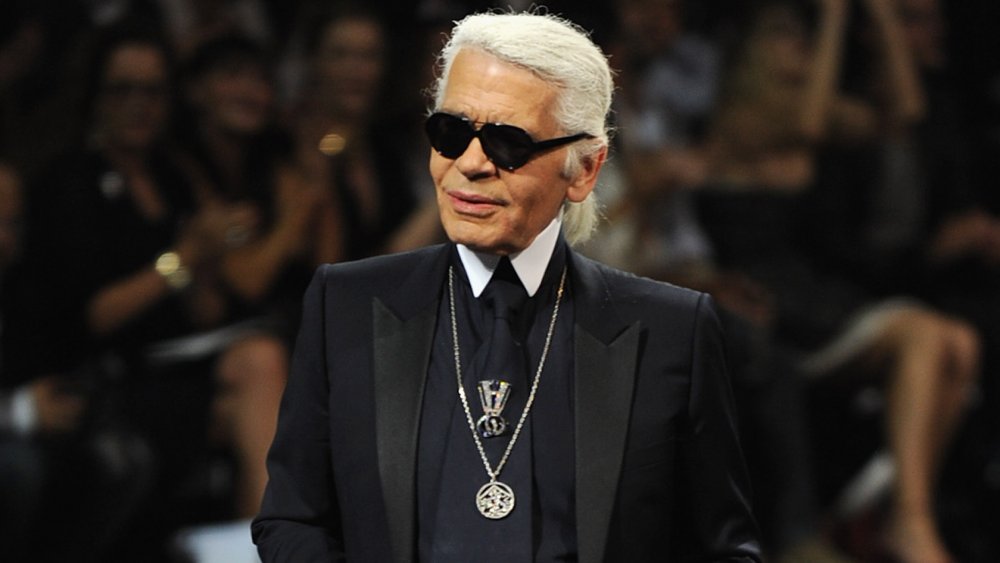This Is Why Coco Chanel Never Got Married
Coco Chanel seems to epitomize the successful mid-century woman who was married to her career and never had time for a family — the kind of woman who was held up as a cautionary tale in the '50s. However, by the '70s, Chanel was seen as more of an inspiration and, in some circles, a feminist icon. As Alice Litscher, a professor in fashion communication at the Institut Français de la Mode in Paris, told The Guardian, Chanel's "atypical" single status "meant radically rethinking [her] relationship to the male gaze and therefore to style."
Yet, while there is some truth behind the assertion that Chanel's vocation is what kept her single, the real story behind her unconventional lifestyle is a lot more complicated than that. Perhaps the most important thing to realize about Chanel's motivation to succeed is the knowledge that she was born into dire poverty. As Tradesy's The Rag noted, Chanel was the daughter of an unmarried washerwoman and a street vendor. By age 12, the orphaned Chanel was all alone in the world and well aware she would have to fend for herself for the rest of her life. After all, even a successful marriage was highly unlikely for a girl from such an unfortunate background. All Chanel had to go on was her drive, ambition, and determination to use whatever she had to make her way in the world.
Coco Chanel did not live a solitary life
While Coco Chanel never embraced the conventional married life, she did have a number of lovers, many of whom helped to advance her social standing and, therefore, her career. As a teen, the young Chanel became a cabaret singer and it was there that she met an extremely wealthy man named Etienne Balsan. Chanel soon became Balsan's mistress and she lived with him for three years, learning the mysterious ways of the fin de siècle one percenters, and possibly giving birth to a second-generation illegitimate child whom she would later pass off as her nephew (via Tradesy).
The real love of Chanel's life, however, was a polo-playing shipping tycoon named Arthur "Boy" Capel. He not only financed, but also inspired her earliest ventures into the fashion industry. His premature death also served as the origin of Chanel's famous "little black dress." According to Men Style Fashion, Chanel was the one who turned this staple from a mourning garment into a timeless symbol of elegance.
Coco Chanel's later lovers were a mixed bag
After Arthur Capel died, Coco Chanel threw herself into her work, but she still found time for l'amour. What she wasn't looking for, however, was a man with whom to settle down. Instead, she preferred to play the field while retaining her own independence. Among her prominent lovers were the Russian composer Igor Stravinsky, the Spanish painter Salvador Dalí, and the Russian Grand Duke Dmitri Pavlovich (pictured), who introduced her to the parfumeur who would go on to create her line's signature scent, Chanel No. 5.
Perhaps Chanel's worst partner, however, was a man named Hans Gunther von Dincklage. The two hooked up in Paris in the early 1940s when she was residing at the Ritz and he was with the occupying Nazi forces. No lowly foot soldier, vin Dincklage was a member of the German High Command and Chanel's alliance with the Axis was a deliberate one to ensure she came out on the winning side at a time when it looked as if France was destined to be Germany's pet poodle. When events took a turn and her lover returned to the Fatherland, Chanel secured her safety once more by offering free perfume to each American G.I. (via The Daily Mail).
Coco Chanel never met the most important man in her life
After Coco Chanel's dangerous liaison with Hans Gunther von Dincklage, the fashion designer and any subsequent lovers seemed to lay low. (But then again, once you've dated a Nazi, it's probably about time to hang up that little black dress and settle down as une femme à chats.) Cats, however, weren't really Chanel's thing. Instead, after keeping her fashion house closed for nearly 10 years after the war — which was not just sensible, but also necessary, seeing as collaborators like Chanel were very much out of favor — she re-opened it again in 1954 at age 71. While the French media was still disinclined to embrace her return to haute couture, both Americans and Brits embraced the chic new Chanel suit. So much so, in fact, that it is still considered a classic nearly 70 years later (via Business of Fashion).
While Chanel died in 1973, there would ultimately be one more very significant man in her life. Although he never met Chanel in person, industry icon Karl Lagerfeld, who took over the House of Chanel in 1983, practically reincarnated her vision. After 35 years at the helm of Chanel, there's no doubt that Lagerfeld's name will forever be linked to that of Coco Chanel, so they might even be seen as "married" in some odd, posthumous sense (via The Cut). And their visionary talents will surely continue to influence the fashion industry for generations to come.



